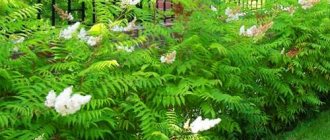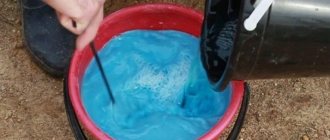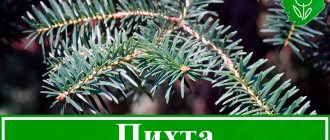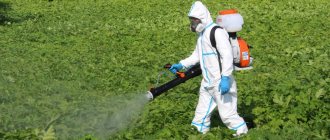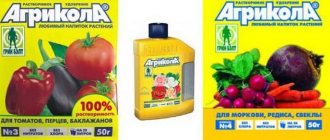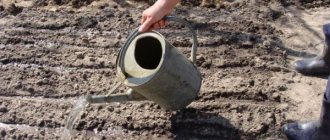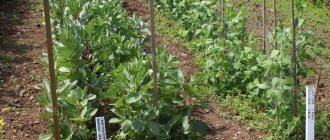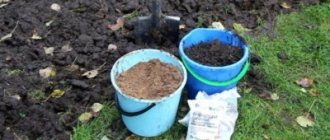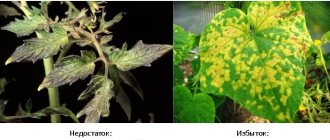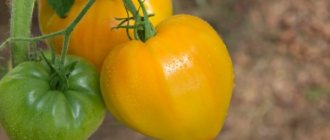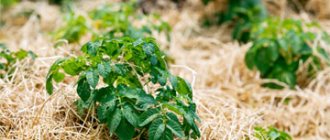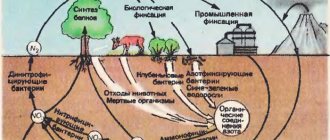Potassium permanganate or potassium permanganate is one of the most powerful antiseptics. It suppresses the activity of most pathogenic microorganisms. Experienced gardeners have long known that this pharmaceutical product can be successfully used not only for medicinal purposes, but also in summer cottage farming. But for those who are just beginning to learn the basics of gardening art, such a discovery will certainly be a real find.
How to dilute potassium permanganate for processing for medical purposes
The main rule is to maintain clear proportions when preparing the solution, otherwise potassium permanganate will become a dangerous irritant for the skin and mucous membranes. For processing, a 0.1-0.5% solution is most often used. The weakest solution of potassium permanganate is used to rinse the mouth and throat. External purulent wounds and burns can be lubricated with a 2% composition.
To prepare a weak solution per 1 liter of water, add 2-3, a stronger solution - 3-4 grains of the substance. To make them dissolve faster, you can use warm water.
The potassium permanganate solution for any procedure should always be fresh
When preparing the solution, be sure to follow the following safety rules :
- do not touch grains of potassium permanganate with your hands, but take them with a spoon, match or toothpick;
- Stir the solution thoroughly until the grains are completely dissolved to avoid getting burned;
- do not store the prepared solution;
- Use personal protective equipment when working with the drug.
Keep potassium permanganate out of the reach of children and animals. Do not leave the substance in the sun.
Using manganese solution for indoor plants
Just as for garden or vegetable crops, the role of manganese for indoor plants is its disinfecting effect and replenishing the lack of microelements necessary for the growth and development of plants. To obtain benefits from the drug, it is necessary to use potassium permanganate only within acceptable limits, otherwise it can cause plant burns and excessive oxidation of the soil.
Manganese solution is also used for indoor plants
What flowers can be watered
Acidic soil is not suitable for all types of plants, so they respond favorably to the use of a solution of potassium permanganate. This product is perfect for indoor plants such as:
- fern;
- ivy;
- orchid;
- hydrangea;
- begonia;
- monstera;
- violet.
How to dilute the product
In various areas it is necessary to use solutions of potassium permanganate of different concentrations:
- For spraying, use a very weak solution - almost transparent with a slight pale pink tint. To obtain it, dissolve 1 g of crystals in 5 liters of water.
- To feed indoor plants, a solution of a more saturated light pink color is used, which is achieved by dissolving 1.5 g of potassium permanganate in 5 liters of water.
- To disinfect soil in pots, prepare a more saturated solution: 0.5 g of product per 1 liter of water.
- To soak the seeds, 1 g of the drug is dissolved in 500 ml of water.
To get the desired effect from use, you should take a fresh ready-made solution, which has been stored for no more than 3 or 4 days.
Dosage and frequency of watering
For prevention, it is enough to water indoor plants twice a year. And to combat pests or diseases, more frequent watering is allowed, but not more than once every 7-10 days. It is better to supplement them with exposure to other substances - ash, tobacco or laundry soap. More frequent watering can cause deterioration in the condition of plants due to an excess of manganese and potassium.
How to dilute potassium permanganate for plant treatment
The beneficial properties of potassium permanganate are successfully used by summer residents and owners of indoor flowers. For plants, solutions are prepared slightly differently; the amount of potassium permanganate is measured in grams and diluted in a large volume of water. If you don't have a scale, use a teaspoon to measure. It is best to use transparent glass containers to prepare the solution.
In 1 tsp. without a slide contains about 6 g of potassium permanganate.
Now let’s look at 14 popular ways to use potassium permanganate in the garden, vegetable garden and flower garden.
Disinfection of planting containers with potassium permanganate
Potassium permanganate will do an excellent job of disinfecting planting containers, flower pots and trays. For the procedure, prepare the following solution: dilute to 3 tsp in 10 liters of water. potassium permanganate. Wash plastic containers with the resulting mixture, and soak wooden containers for a short time so that they are saturated with the substance. Then dry everything thoroughly and proceed to planting.
Also treat peat containers and tablets with a solution of potassium permanganate to prevent mold from appearing on them.
- What to grow seedlings in - choosing the right container
Let’s take all the containers apart “piece by piece” and tell you why plants don’t “like” peat pots and what dangers seedling cassettes pose.
Dressing soil for seedlings with potassium permanganate
Once the planting container is ready, it’s time to work on the soil. And first of all, it needs to be disinfected or pickled. It doesn't matter what kind of soil you use. Even if it is bought in a store or brought from a summer cottage, and not collected in the nearest forest, it is better to play it safe and use potassium permanganate. Dilute 5 g of potassium permanganate in 1 liter of water, mix thoroughly and water the soil generously. Now you will be sure that you have protected future seedlings from diseases and pests!
To enhance the effect of the mixture, preheat the water to 70°C. After the procedure, you can plant seeds only in cooled and slightly dry soil.
Consumption rate
It must be observed: too high a concentration of antiseptic is harmful to leaves and roots.
Processing beds
How to treat the soil with potassium permanganate?
- For 10 liters of water heated to 70°C you will need 5 g of potassium permanganate. What to do if you don’t have scales at hand? One level teaspoon is 13.5 g. Therefore, you need to measure out a little less than half.
- The solution must be stirred until not a single undissolved crystal remains.
- Pour it into a watering can and pour the solution over 3-4 m² of garden beds or the same area of soil in the greenhouse, distributing the product evenly. In this case, only the top layer of soil is wetted. To completely treat the soil, you will have to additionally use a solution of another fungicide. If you use a hot solution to cultivate the soil between rows of strawberries in early spring or pour it on currant and gooseberry bushes before the buds swell, there will be fewer pathogens and pests on them - the hot solution will simply destroy them.
Disinfection of planting soil
The soil is also treated with potassium permanganate locally before planting seedlings. To do this, just pour a liter jar of solution into each dug hole. How to dilute manganese to treat the substrate for seedlings? The proportions for diluting the solution in this case are the same. It is better to spill the soil placed in seedling containers or cups. It would be a good idea to disinfect peat tablets as well.
The soil for indoor plants is disinfected in the same way.
For seeds and seedlings
An antiseptic solution for seeds is needed so that no pathogens remain on their surface. Its concentration is 0.5%; 0.5 g of the substance is dissolved in 100 ml of water. The seeds are immersed in the solution for 20 minutes. You can’t keep them in it longer: they can get burned and their germination rate will decrease. For the same reason, seeds should be washed after disinfection.
Pre-sowing treatment of seeds with potassium permanganate
To ensure that the seedlings grow strong and healthy, do not be lazy to soak the seeds in potassium permanganate. This simple procedure will not give pathogenic bacteria a chance to destroy your plants. In addition, soaking allows you to speed up the process of germination of seedlings.
You can pickle the seeds using the following recipe: dissolve 1 g of potassium permanganate in 1 liter of water until a light pink tint forms. Immerse them in the resulting solution for 15-20 minutes (it is not recommended to keep them longer so that the seeds do not get burned), then rinse and dry.
The seeds of any plants will respond well to pre-sowing treatment, so it is worth including this procedure in the list of gardening works
Seeds are soaked in potassium permanganate not only before sowing, but also for subsequent storage. After processing, they remain viable longer.
Why is pre-planting soil disinfection carried out?
Every year more and more pathogenic microorganisms accumulate in the soil, causing not only various diseases, but also the death of plants. Even purchased soil, including from well-known manufacturers, cannot be guaranteed to be free of phytopathogens.
Treating the soil before planting seedlings allows you to destroy phytopathogens (fungal spores, bacteria), insect eggs, nematodes, and also provides preventive protection against a common disease of young plants - “black leg”. All this is especially important at the stage of growing seedlings.
There are a number of ways to prepare high-quality soil.
Treatment of tubers and bulbs with potassium permanganate
Tubers and plant bulbs are vulnerable to various diseases, so it would be a good idea to treat them with a solution of potassium permanganate. This procedure is quite painstaking, but effective. Experienced summer residents carry it out every spring.
Treatment of onions has proven especially effective . This procedure disinfects the bulbs and at the same time accelerates the development of the root system.
You can soak onions in potassium permanganate before planting, for example, in this way: dissolve 3 g of the substance in 1 liter of water and place the bulbs in the solution for 1 hour. If signs of infection are noticeable on the planting material, a more powerful remedy is prepared. Add 20 g of the substance to 1 liter of water and soak the bulbs for 20 minutes.
Potato tubers are soaked for 20-30 minutes in a disinfectant solution. To prepare it, dilute 10 g of potassium permanganate in 10 liters of water. To enhance the protective effect, add 2 g of copper sulfate to the solution. Spraying with the drug is also effective.
You can soak bulbs of tulips, daffodils, gladioli, crocuses and other bulbous and corm plants in a solution of potassium permanganate. In this case, the liquid should completely cover the bulbs.
- Spring bulbs - photos, names, tips for planting and growing
A selection of 20 spring-flowering bulbs with photos, descriptions and planting tips.
Chemical soil disinfection
You should write about chemical fungicides, but you shouldn’t use them. At least for our windowsill gardens. I will write only about those drugs that have hazard class 4 (low-hazard substance).
Albit . The composition contains terpene acids, extracts from soil bacteria and microelements. Available in paste form. Prevents root rot, powdery mildew, brown rot, and other nasty things from developing. It is considered a biological fungicide with a chemical effect.
permanganate (potassium permanganate). A long-familiar but ineffective method of soil disinfection. It also becomes a potassium fertilizer.
There are a great many drugs of this kind, but they are hardly suitable for us.
Copper sulfate, iron sulfate . They disinfect and at the same time inhibit plant growth. They don't suit us.
And about the last remedy for today - mustard powder ! Effective against fungi, bacteria, viruses, thrips, nematodes. Loosens the soil and stimulates plant growth. Apply to the soil as follows: per 5 liters of soil, a tablespoon of mustard powder. Combine with nitrogen fertilizer.
g.janecraft.net
Disinfection of cellars and basements using potassium permanganate
Before planting the harvest, it is worth cleaning up the cellars and basements and treating the premises with an antiseptic. An excellent option is a saturated solution of potassium permanganate, which kills germs and mold. You should wipe and spray not only the places where the crop will be stored, but also the walls. Before work, remove debris and cobwebs in advance. It is better to soak wooden shelves in the solution and then dry them in the sun.
Prolonged inhalation of potassium permanganate vapor in a closed room can lead to poisoning, so be sure to wear a respirator and rubber gloves.
Disinfection of greenhouses and greenhouses with potassium permanganate
If the plants were sick last year, be sure to treat the greenhouses and greenhouses with a solution of potassium permanganate. It wouldn’t hurt to do this to prevent diseases. The solution can be made deep pink, and a soft cloth or sponge can be used as a tool. For work, be sure to wear rubber gloves and a respirator.
Treatment of greenhouses and greenhouses with potassium permanganate takes place in several stages:
- remove plant debris, rotten ropes, etc.;
- clean the frame and walls from dirt;
- wash all building elements with a solution of potassium permanganate (2-3 tsp per 10 liters of water);
- wash the door and threshold thoroughly;
- wipe the outside of the building.
After treatment, ventilate the greenhouse and greenhouse, leaving them open for several days.
- Preparing a polycarbonate greenhouse for spring planting
As soon as the snow melts at the dacha, you need to start preparing the greenhouse for planting. It consists of several stages, so give it a couple of days.
Biological disinfection of soil with fungicides
The most popular biological fungicides : Fitosporin, Barrier, Barrier, Fitop, Integral, Baktofit, Agat, Planzir, Alirin B, Trichodermin. All of them have a non-chemical effect on fungi and pathogenic bacteria - the “right” bacteria. For the first time, I used the Ukrainian analogue of Fitosporin - Phytocid M. I planted mini-tomato seeds in the soil treated with it. In general, biological fungicides are praised by flower growers. The main thing is to strictly follow the instructions. It is written on the packaging that diluted Phytocid should be stored for no more than a day, but I ended up with a three-liter jar and I have been watering all my herbs with this solution for the second week now. The watercress is delighted with this watering; I have never had such lush harvests!
watercress after treatment with Phytocid
Disinfection of garden tools with potassium permanganate
Pathogens often accumulate on garden tools. For example, if you cut off the branches of diseased trees with pruning shears, and then immediately took on roses, the latter may become seriously ill. Therefore, you can wash small garden tools with a solution of potassium permanganate before each procedure. For disinfection, use a concentrated solution (at least 1 tsp per 1 liter of water).
Large tools - pitchforks, shovels, rakes, etc. – usually washed at the end of the season. To do this, prepare a bowl of water, add a few tablespoons of potassium permanganate to it until the solution acquires a rich crimson color, and carefully wash all equipment with a sponge or rag. It is better to do this with gloves. Then dry the tools and store them.
Dressing the soil in the beds using potassium permanganate
As you know, potassium permanganate perfectly disinfects, so it is useful to use it for soil in garden beds. The soil should be etched with a weak solution. Add 5 g of potassium permanganate to 10 liters of warm water and wait until all the crystals dissolve. Place the prepared solution in a watering can and water the beds evenly.
Potassium permanganate oxidizes the soil, so it is better to use it on neutral and alkaline soil, or be sure to add lime after treatment. However, you should not use nitrogen fertilizers at the same time - they also make the soil acidic.
Watering with potassium permanganate only affects the surface layer of soil and does not kill all soil pathogens. Therefore, be sure to supplement this method with others, for example, disinfect with insecticides and fungicides.
- Soil disinfection from fungal infections
Effective methods for disinfecting soil in the garden.
Disinfection of soil in pots
It would seem that potting soil is much easier to improve and disinfect than in a garden bed - the volume is small, you can control literally every centimeter of the soil. You just have to get a little wrong with the proportions and that’s it, goodbye to the harvest. In open ground, you can sow green manure, add stinking manure, pour boiling water on it, and potassium permanganate - even if you screw it up a little, the soil will be restored. There is no room for error with potting soil...
Soil disinfection is not for the lazy. But if you don’t take at least basic measures, you can ruin all your work. Where does the soil in bags come from? Often, this is waste soil from greenhouses, sifted and enriched with peat, mineral fertilizer and ballast fillers. Often unidentifiable herbs sprout from it, but this can be survived... And this soil is also “enriched” with pathogenic bacteria, mold spores, aphid larvae and other bugs.
Potting soil can be disinfected in a number of ways, which will be discussed in this article.
Fertilizing plants with potassium permanganate
The substance contains manganese and potassium, which plants need for proper development and photosynthesis. A budget product such as potassium permanganate will be an excellent addition to conventional fertilizing; it will increase plant resistance to disease and resistance to adverse environmental conditions.
Sometimes summer residents have doubts whether it is possible to water plants with potassium permanganate and whether it will harm them. The concentration of the solution is important here. After all, even the best fertilizer can ruin the harvest.
Cabbage, beets, carrots, potatoes, and peas are fed with potassium permanganate in mid-summer. To do this, prepare a solution of 3 g of the substance and 10 liters of water, which is enough for 3-4 sq.m of planting. You can also water gooseberries, raspberries and currants with potassium permanganate as a fertilizer. It is better to do this in the spring to speed up the setting of berries.
The use of potassium permanganate in plant propagation
Flower growers often use a solution of potassium permanganate to treat sections of rhizomes, bulbs, and corms. The procedure can be carried out not only when dividing and rejuvenating old plants, but also to treat damaged specimens. A solution of potassium permanganate protects flowers from diseases and pests, strengthens the immune system and protects against moisture loss.
After rejuvenating begonias, dividing gladioli, dahlias or hippeastrums, prepare a saturated solution of potassium permanganate and carefully lubricate all cut surfaces with a piece of cotton wool. Then dry the wet areas, sprinkle with charcoal and plant the plants in the ground.
It is not recommended to immerse bulbs and rhizomes in the solution so that the exposed parts do not get burned.
Soil treatment methods
I agree with Larisa Litvinova.
Potassium permanganate (potassium permanganate) is used to treat seeds, bulbs, corms, and rhizomes of flowering plants in a concentration of 0.1-0.15% for two hours. Can be used for health-improving watering of seedlings, seedlings and adult plants at the root in the fight against blackleg, fusarium, and bacteriosis. Used to disinfect equipment and tools.
carry out autumn cleaning in the greenhouse;
Ash neutralizes and improves soil structure.
Microorganisms and fungi remain in the soil after winter. Macrosporiasis, black leg, late blight, clubroot, brown spot - these diseases are manifested by rotting of plants, stunted growth, and the appearance of a white coating on the leaves.
For better germination, planting material is soaked in hot water for a day before planting.
Sand. Helps the soil not to dry out or settle.
Which method to choose is up to you. In general, each of them is effective and time-tested. Having figured out the question of how to disinfect the soil, you need to consider the last method in detail.
The most common problems with growing seedlings arise precisely because of the soil. To ensure that no pathogenic microbes remain in it, it is subjected to special treatment. There are several ways to disinfect soil for seedlings. Let's look at each of them separately:
Folk remedies for treating seeds and soil
When preparing the soil for seedlings, you need to know what should never be in the ground:
1 gram per 10 liters of water.
I go by color - a pink solution, not pale, but not too saturated.
you need to make a weak weak solution
- supports for plants should be changed annually;
- Soil treatment with a solution of potassium permanganate, that is, potassium permanganate, is popular. This simple method can be used to treat plant seeds before planting. To do this, 1 gram of potassium permanganate is diluted in 200 ml of water, the seeds are soaked for half an hour. The soil is treated with a solution of 10 grams of the drug per 10 liters of water. Potassium permanganate can be used to spray plants when symptoms of powdery mildew, aphids and gray rot appear on the leaves.
- Pests whose larvae remain in the soil and destroy plants in the spring. These include spider mites and aphids.
- Having understood the question of how and with what to treat seeds, soil, plants from bacteria and diseases, you can expect a good result.
- Agroperlite. This substance helps the root system to be saturated with oxygen.
The presented preparations are suitable for treating soil and plants:
Potassium permanganate against black leg on seedlings
Blackleg can destroy entire seedlings. Affected seedlings can rarely be saved, and it is not easy to stop the infection of neighboring plants. The best prevention of this fungal disease is potassium permanganate; it is used to treat seedlings in this way: 3-5 g of the substance is dissolved in 10 liters of water. You should get a pink solution, which the seedlings should be carefully watered at the root. If you decide to water the seedlings with potassium permanganate, the main thing is not to get too carried away with this product, and when the plants get stronger, continue care activities.
Watering with potassium permanganate will additionally nourish the seedlings, they will grow hardy and strong
Beginning gardeners often doubt whether it is possible to water seedlings with potassium permanganate. Rest assured, this procedure, when performed correctly, is safe for plants and will only benefit them!
Disinfection of soil with special substances
In addition to exposing the seedling base to hot and cold temperatures, there are methods of cleaning with additional substances. Soil purification is carried out on the basis of chemical and biological substances.
Chemical agents for soil disinfection are used in the most extreme cases - when neither heat treatment nor biological cleaning methods have yielded results. Such substances include:
- Chloride of lime - destroys most pathogenic microorganisms, is introduced into the soil 6 months before planting seedlings in an amount of up to 200 g / 1 sq. m. m. But it should be taken into account that not all seedlings perceive this substance positively.
- Formalin fights blackleg disease microbes; it must be added to the soil two weeks before planting the sprouts. 200 ml of 40% product is dissolved in a bucket of water and poured into the ground. The amount indicated will be sufficient for 1 sq. m plot. Then the treated area is covered with oilcloth; humus or mown grass can be used as cover. After three days, the protective layer is removed and the ground is dug up.
- The chemical TMTD in the form of a powder or suspension is introduced into the base for planting seedlings immediately before planting. This substance is harmless to plants. For treatment, it is enough to dilute a suspension with a concentration of 0.6% in a bucket of water and pour it into the soil.
- Using copper sulfate, the soil is disinfected in the fall, after harvesting. The optimal amount per bucket of water is 50 grams of product. Treatment with the specified substance is allowed once every five years.
Do not overdo it: copper sulfate in large quantities is destructive for plants!
Biological substances give vitality to the soil, increase the number of beneficial bacteria, and reduce toxicity. Among the biological additives to the soil to obtain a cleansing effect, the following can be distinguished:
- Trichodermin is essentially an antibiotic containing biologically active substances that are produced when harmful competing fungi appear. The action of the described product is expressed in the release of beneficial mushrooms that suppress the vital activity of pathogenic microbes and bacteria. The product is mixed in the proportion: 1 gram per 1 kg of soil, after dissolving the substance in water.
- Baikal EM-1 is ideal for preventive soil treatment before planting seedlings and after harvesting. Add 150 ml of the product to a bucket of water and mix. For 1 sq. m of soil, it would be optimal to pour 2.5 liters of solution.
- Alirin-B – fights root rot. 1 tablet of the product is diluted in 5 liters of water and the sprouts are watered.
- Fitosporin-M - the action is based on the fact that after dissolving the product in water, the active substances begin to act and suppress the activity of harmful bacteria, normalizing the microflora, increasing resistance to various types of seedling diseases. To process 1 sq. m area will be sufficient 6 gr. dissolve the substances in a bucket of water.
It is strictly forbidden to mix chemical and biological preparations. To avoid the destruction of useful compounds, it is necessary to wait about two weeks between the use of these products.
Potassium permanganate against gray rot
To prevent raspberries and garden strawberries from suffering from gray rot, prepare the following solution: 1.5-2 tsp. Dilute potassium permanganate in 10 liters of water. Then thoroughly spray the plants themselves and the soil underneath them. The procedure must be carried out before flowering, when the leaves just begin to grow. In the summer, when setting berries, re-treat with a preparation of a more concentrated composition in the amount of 2-2.5 tsp. for 10 liters of water.
To protect grapes from gray rot, spray the plants with a solution of 5-7 g of potassium permanganate per 10 liters of water.
Gray rot can also affect cucumbers, eggplants and tomatoes, so do not forget to treat them with potassium permanganate.
Does watering seedlings with potassium permanganate help against blackleg? And can I water it?
Victor Soloviev
Black leg Many of us have encountered such a scourge. A fungal disease that causes the death of seedlings. Blackleg affects the seedlings of many garden crops and flowers. Plants become diseased very early, from seedlings to the formation of several leaves. The disease is caused by fungi that are present in almost any soil. They colonize the root collar of small seedlings and clog the stem vessels through which nutrients are supplied. The root collars of the plants turn black, and then the entire plant dies. A characteristic sign of the disease is blackening and rotting of the root collar. The root system of diseased plants develops poorly, and seedlings are very easily pulled out of the soil. The defeat is often widespread, especially in greenhouses and nurseries. In open ground, the disease is much less common. Sources of infection are soil and plant debris, where the pathogens of the disease, fungi, persist and live. The disease is promoted by dense plantings, excessive watering, poor ventilation, and sudden changes in temperature and soil moisture. The infection persists in the soil. To prevent blackleg, you need to be careful about preparing the soil for seedlings. The soil mixture must be freshly prepared. You cannot add humus or compost to it. There are a lot of fungi in them. Soil disinfection can be carried out in various ways. If you have to use soil that has already been used, then it must be calcined in the oven at a temperature of 110 degrees and the soil must be kept in the oven for at least 30 minutes. Or process in the microwave. In the seed boxes, the soil is spilled twice with boiling water or a 1% solution of potassium permanganate. In greenhouses, it is recommended to disinfect the soil with freshly slaked lime (1-1.5 kg/m2). A more modern biological remedy is to spill the soil with a solution of Fitosporin. Three days before sowing seeds or before picking seedlings, you can add Cumulus DF (5 g/m2) to the soil. Add Trichodermin-3 to the soil 3-5 days before sowing. Seeds, unless the label says that they have undergone special treatment, should be kept in potassium permanganate. Do not forget that there are varieties whose seedlings are more resistant to blackleg disease than others. Keep this in mind when choosing a variety. A few days before sowing, you can heat the seeds in a solution of zinc sulfate (20 mg per 100 ml of water) at a temperature of 48-50 ° C for 20 minutes. One of the main risk factors is thickening of crops. Seedlings in separate containers are damaged much less frequently by blackleg. The development of the disease is favored by low air temperatures, high humidity, and low light levels. You should also not sow seedlings too early, for example in February. In March there is more sun and it is warmer. Less risk of disease. What to do at the first sign of illness. 1. Remove dead plants. Dry the soil and loosen it. 2. Add wood ash or crushed charcoal to the container with seedlings. You can sprinkle it with a mixture of dry sand and ash. 3. After the start of recovery, leave the healthiest specimens. 4. As soon as the seedlings get stronger, transplant them into other soil. 5. Do not rush to sow seeds for seedlings. 6. When foci of disease appear, the affected plants are carefully removed, the seedlings are watered with a pink solution of potassium permanganate (3-5 g per 10 liters of water), then the seedlings are not watered at all for a week. For prevention and at the first signs of disease, it is recommended to spray seedlings with biological preparations (Baktofit, Planriz, Fitosporin, Fitolavin-300).
Yana Yevtushenko
If it’s already overgrown, then it’s better to replant. If it’s prevention, then yes, the main thing is not to overdo it with watering at all. Black leg from dampness
Daniel
Potassium permanganate can be used to disinfect the soil in beds, boxes or cups adapted for growing plants. So, seedlings in cups are watered with a warm pink solution of potassium permanganate every 10 days. (You can alternate with watering with ash lye.) Before planting the seeds of any vegetables or flowers, water the soil in the box with a special solution: 3–5 g of potassium permanganate per 10 liters of water. This prevents the “black leg” disease of tomatoes, eggplant, peppers, and cabbage. The same concentration of solution will be needed to disinfect the soil in the greenhouse. 1 liter of solution is poured into the holes for seedlings of tomatoes, cucumbers or other vegetables. However, if you are attentive to your green “wards”, then by their appearance you can almost always determine whether the plant is healthy, and if you notice the first signs of infection, you can immediately take the necessary measures. However, to prevent diseases and the appearance of pests in the greenhouse, “experienced” gardeners treat the outside of the greenhouse several times a season with a 0.5% solution of potassium permanganate. Moreover, not only the walls of the greenhouse are treated, but also the area at the entrance. Gardeners do this unscheduled (and therefore necessarily) when it gets cold after rain. Fertilizing with a solution of potassium permanganate (3 g per 10 liters of water) increases plant resistance not only to diseases, but also to unfavorable weather.
Galina
No, you can't help anymore. To avoid blacklegs, do not fill the soil and sprinkle the soil with clean, calcined sand on top before sowing the seeds.
Olga
It is better to pour furatsilin solution with which to gargle 1 t per glass of water
Potassium permanganate against powdery mildew
Has powdery mildew appeared on cucumbers, beets or zucchini? Urgently prepare a solution of potassium permanganate, which is effective at the onset of the disease: dilute 3 g of the substance in 10 liters of water and spray all the plants, as well as the soil around them and, if necessary, the walls of the greenhouse. The procedure should be carried out every 2-3 days at least 3 times per season. If powdery mildew has “attacked” currants, gooseberries, apple trees or garden strawberries, add 50 g of potassium nitrate to the mixture described above to enhance plant nutrition and strengthen their immunity.
Potassium permanganate as a fertilizer
The first step to getting a good harvest is proper pre-sowing tillage. For disinfection, in addition to steaming or freezing the substrate, a solution of potassium permanganate is often used, which will help:
- destroy pathogens;
- protect seedlings from harmful bacteria;
- stimulate biological processes;
- get rid of all types of pests;
- saturate the soil with useful substances.
Treatment with potassium permanganate is suitable for indoor plants and crops grown on open and protected soils (greenhouses, greenhouses).
